How can I set the origin / interception of the y-axis and x-axis in ggplot2?
I have a dataset like below (data structure at the end of question):
Var1 Var2 value
1 04:00 Personal care 2
2 04:10 Personal care 2
3 04:20 Personal care 2
4 04:30 Personal care 2
5 04:40 Personal care 2
I am using the following code to plot my data
plot <- ggplot(melted_Activities, aes(x = Var1,y = value,fill = Var2)) +
geom_col(position = "fill") +
labs(x="Time", y="Probabilities", colour="Activties", fill="Activites") +
theme(legend.position="right", axis.text.x = element_text(angle = 0, hjust = 0)) +
annotate("rect", fill = "black", alpha = 0.3,
xmin = c(73), xmax = c(97), ymin = -Inf, ymax = Inf)
plot + scale_x_discrete(breaks = c("04:00","05:00", "06:00", "07:00","08:00", "09:00",
"10:00", "11:00", "12:00","13:00", "14:00", "15:00",
"16:00", "17:00", "18:00", "19:00", "20:00", "21:00",
"22:00", "23:00", "00:00", "01:00", "02:00", "03:00"),
expand = c(0,0)) + scale_y_continuous(expand = c(-0,0))
Data:
melted_Activities <- structure(list(Var1 = structure(1:5, .Label = c("04:00", "04:10",
"04:20", "04:30", "04:40", "04:50", "05:00", "05:10", "05:20",
"05:30", "05:40", "05:50", "06:00", "06:10", "06:20", "06:30",
"06:40", "06:50", "07:00", "07:10", "07:20", "07:30", "07:40",
"07:50", "08:00", "08:10", "08:20", "08:30", "08:40", "08:50",
"09:00", "09:10", "09:20", "09:30", "09:40", "09:50", "10:00",
"10:10", "10:20", "10:30", "10:40", "10:50", "11:00", "11:10",
"11:20", "11:30", "11:40", "11:50", "12:00", "12:10", "12:20",
"12:30", "12:40", "12:50", "13:00", "13:10", "13:20", "13:30",
"13:40", "13:50", "14:00", "14:10", "14:20", "14:30", "14:40",
"14:50", "15:00", "15:10", "15:20", "15:30", "15:40", "15:50",
"16:00", "16:10", "16:20", "16:30", "16:40", "16:50", "17:00",
"17:10", "17:20", "17:30", "17:40", "17:50", "18:00", "18:10",
"18:20", "18:30", "18:40", "18:50", "19:00", "19:10", "19:20",
"19:30", "19:40", "19:50", "20:00", "20:10", "20:20", "20:30",
"20:40", "20:50", "21:00", "21:10", "21:20", "21:30", "21:40",
"21:50", "22:00", "22:10", "22:20", "22:30", "22:40", "22:50",
"23:00", "23:10", "23:20", "23:30", "23:40", "23:50", "00:00",
"00:10", "00:20", "00:30", "00:40", "00:50", "01:00", "01:10",
"01:20", "01:30", "01:40", "01:50", "02:00", "02:10", "02:20",
"02:30", "02:40", "02:50", "03:00", "03:10", "03:20", "03:30",
"03:40", "03:50"), class = "factor"), Var2 = structure(c(1L,
1L, 1L, 1L, 1L), .Label = c("Personal care", "Sleep", "Eating",
"Other personal care", "Employment", "Main job", "Second job",
"Activites related to employment", "Study", "School or University",
"Free time study", "House and family care", "Food management",
"Household maintenance", "Making care for textiles", "Gardening and pet care",
"Construction and repairs", "Shopping and services", "Household management",
"Childcare of own household member", "Help to an adult household member",
"Volunteer work and meeting", "Organisational work", "Informal help to others",
"Participatory activties", "Social care", "Social life", "Entertainment and culture",
"Resting", "Sport and outdoor activities", "Physical exercise",
"Productive exercise", "Sportsrelated activities", "Hobbies, games and computing",
"Arts and hobbies", "Computing", "PC Games", "Mass media", "Reading",
"Tv and video", "Radio and music", "Travel and unspecified time use",
"Travel by purpose", "Punctuating activity"), class = "factor"),
value = c(2, 2, 2, 2, 2)), row.names = c(NA, 5L), class = "data.frame")

